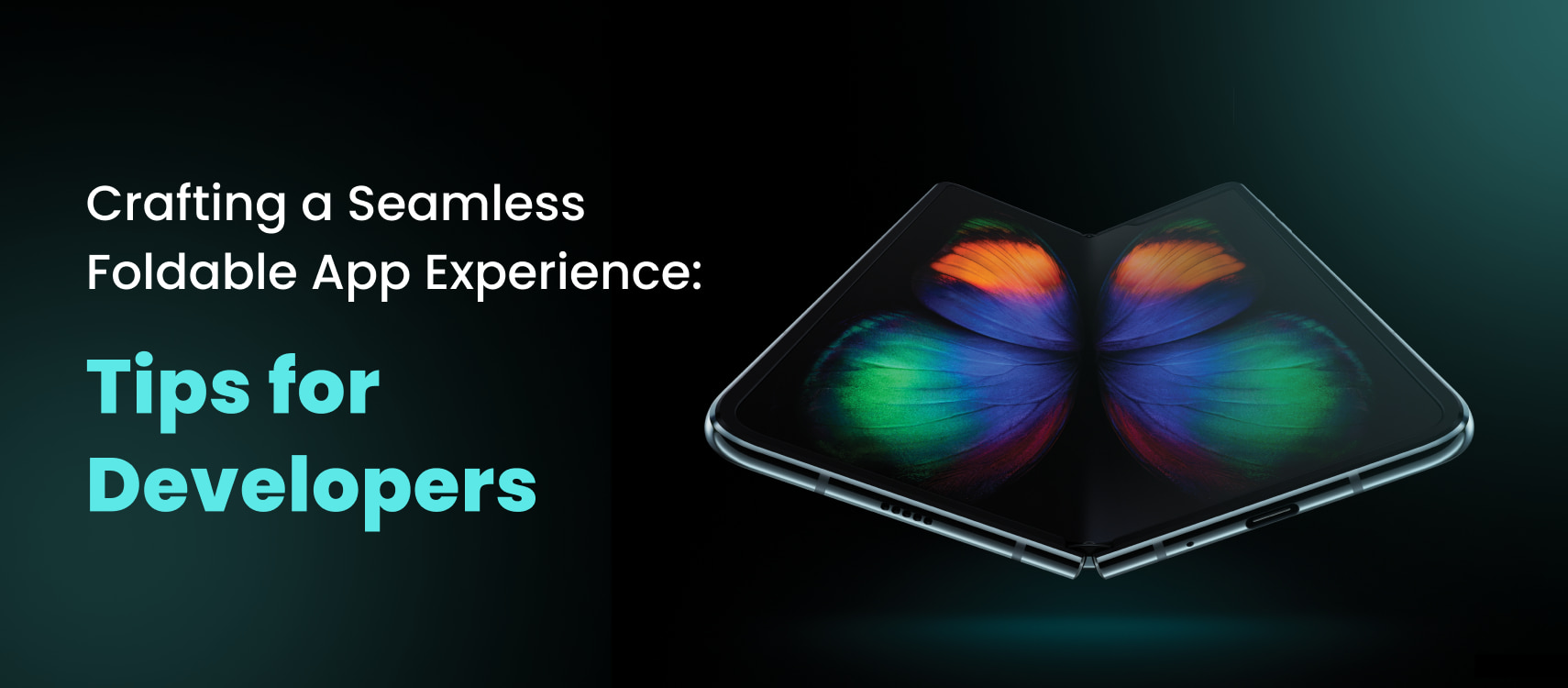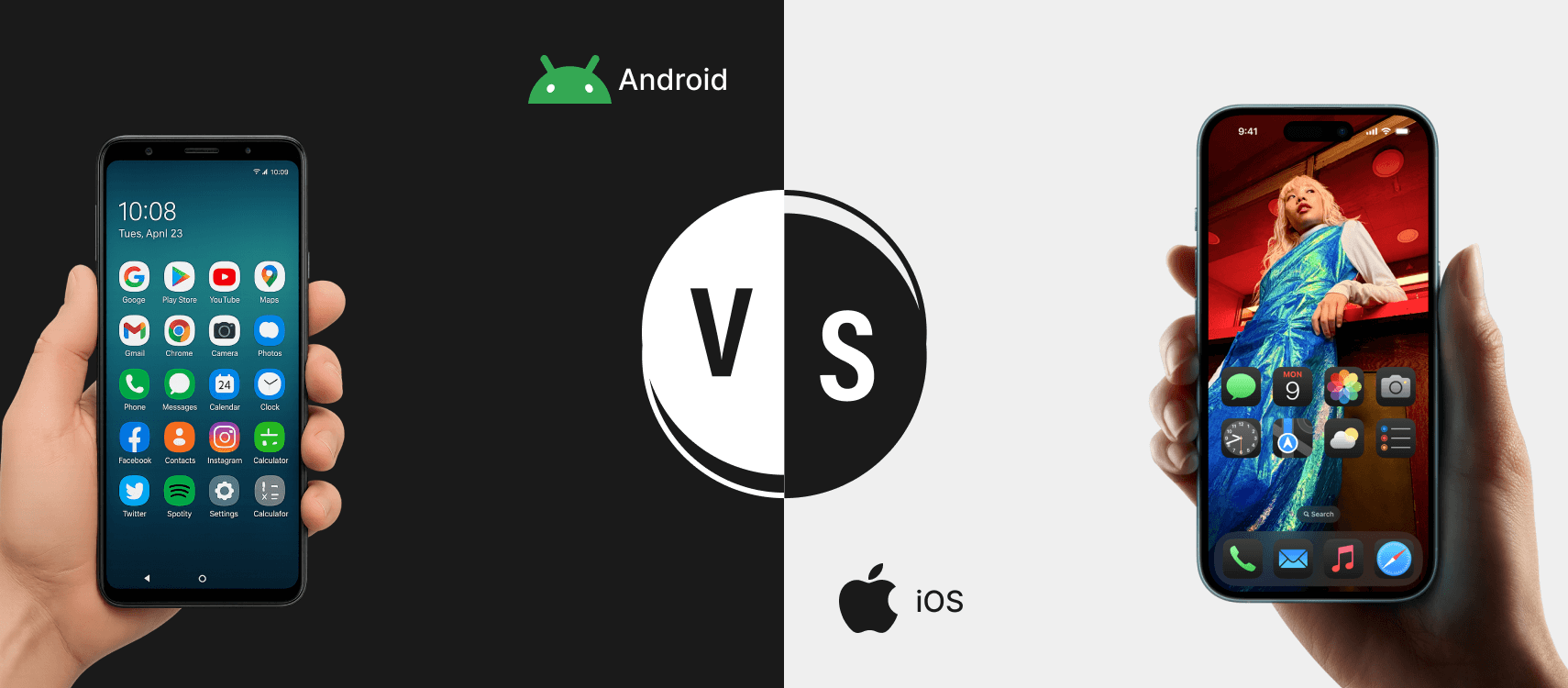Table of Contents
- Understanding Foldable Devices
- Key Features of Foldable Device
- Tips for Developing Foldable Apps
- Summarising
Foldable smartphones have ushered in a new era of innovation in the mobile app development landscape. These devices offer unique possibilities for creating immersive and versatile user experiences. From adapting UI/UX for foldable screens to optimizing performance, there are several intricacies of crafting successful foldable apps.
In this article, we’ll explore key tips and considerations that mobile app development services should keep in mind when developing apps for foldable devices.
Understanding Foldable Devices
Before diving into development tips, it’s crucial to understand the basics of foldable devices. Foldable smartphones typically come in two form factors: the ‘book’ or ‘clamshell’ style, which folds vertically like a traditional flip phone, and the ‘tablet’ style, which folds horizontally to become more compact. The apps for these devices which predominantly fall under Android app development category, offer unique on-screen user experiences, including two separate display modes.
Key Foldable Device Features Include the Following
-
Hinge Mechanism:
Foldable devices use a hinge mechanism that allows them to fold and unfold smoothly. Developers should consider the hinge’s position and movement when designing app layouts.
-
Multi-Window Support:
Foldable devices often support multi-window or multi-app usage, enabling users to run multiple apps side by side. Apps should adapt to this multi-tasking capability.
-
Screen Continuity:
Foldable devices aim to provide a seamless experience as users transition between folded and unfolded states. Apps should support screen continuity to maintain user context.
Tips for Developing Foldable Apps
1. Responsive Layout Design
Foldable devices offer various screen sizes and aspect ratios, so a responsive layout is paramount. Android app developers should consider the following:
-
Flexibility:
Design layouts that can adapt to different screen configurations. Utilize flexible UI components that can adjust to changing screen dimensions.
-
Multi-App Layouts:
Enable multi-app layouts for multi-window support. Ensure your app can seamlessly coexist with other apps on the screen.
-
Orientation Changes:
Handle orientation changes gracefully. Test how your app responds to transitions between folded and unfolded states.
2. Screen Continuity
Maintaining a consistent user experience during transitions is vital. Focus on:
-
State Preservation:
Save and restore app state when transitioning between folded and unfolded modes. Users should seamlessly resume their tasks.
-
Seamless Interaction:
Ensure that interactions, such as scrolling, continue without interruption during state changes.
3. Hinge Awareness
Be mindful of the hinge’s position and movement in your app’s design:
-
Avoid Critical UI Elements:
Avoid placing critical UI elements near the hinge to prevent obstruction or usability issues.
-
Custom Animations:
Implement custom animations that align with the hinge’s movement to create a cohesive and engaging user experience.
4. Multi-Window Support
Foldable devices promote multi-tasking. Consider how your app can enhance productivity:
-
Drag-and-Drop:
Enable drag-and-drop functionality between app windows when applicable, allowing users to easily share content.
-
Resizable Windows:
If your app supports resizable windows, ensure that content scales gracefully and that UI elements remain usable at various sizes.
5. Performance Optimization
Optimize your app’s performance to deliver a smooth user experience:
-
Resource Management:
Manage system resources efficiently, as foldable devices may have multiple apps running simultaneously.
-
Testing:
Extensively test your app’s performance on foldable devices to identify and address any performance bottlenecks.
6. User Education
Educate users on your app’s foldable capabilities and how to maximize their usage:
-
Onboarding:
Provide an onboarding experience that highlights foldable-specific features and gestures.
-
Help Center:
Include a help center or tutorials within your app to guide users in making the most of foldable functionalities.
7. Accessibility
Ensure that your app remains accessible to all users:
-
Accessibility Features:
Implement accessibility features and test them in foldable mode to guarantee a seamless experience for users with disabilities.
-
User Testing:
Involve users with diverse needs and abilities in usability testing to identify and address accessibility issues.
8. Edge Screen Utilization
Leverage the edge screens on some foldable devices for additional functionality:
-
Quick Access:
Consider placing shortcuts or quick access menus on the edge screens for convenient user interaction.
-
Notifications:
Utilize the edge screens to display notifications or provide at-a-glance information.
9. User Feedback
Encourage user feedback to continually improve your foldable app:
-
Feedback Mechanisms:
Include in-app feedback mechanisms that allow users to report issues, suggest improvements, or share their experiences with foldable features.
-
Iterative Development:
Use user feedback as a basis for iterative development to enhance your app’s foldable capabilities.
10. Foldable-Specific Gestures
Foldable devices often introduce unique gestures and interactions that can enhance the user experience. Consider implementing foldable-specific gestures in your app:
-
Split-Screen Activation:
Enable users to activate split-screen or multi-window mode through intuitive gestures like swiping from the edge or pinching on the screen.
-
Hinge Gestures:
Explore creative ways to use hinge gestures for navigation or interaction. For example, users could swipe along the hinge to switch between open apps or reveal quick actions.
11. Customizable Layouts
Recognize that user preferences for app layouts may vary. Allow users to customize the app’s layout and behavior on foldable devices:
-
Layout Presets:
Offer predefined layout presets tailored for different use cases (e.g., productivity, entertainment) or screen configurations.
-
Custom Layouts:
Provide advanced users with the option to manually adjust the layout and component placement to suit their preferences.
12. Foldable App Compatibility
Ensure that your foldable app remains compatible with non-foldable devices. Many users will transition between different device types, and a seamless experience is crucial:
-
Graceful Degradation:
Implement graceful degradation, which means that even on non-foldable devices, the app should function smoothly and intuitively without errors.
-
Responsive Design Across Devices:
Extend responsive design principles to accommodate a wide range of device types, including traditional smartphones and tablets.
Summarising
Developing apps for foldable devices offers exciting opportunities to create innovative and immersive user experiences. By embracing responsive design, ensuring screen continuity, considering hinge awareness, supporting multi-window usage, optimizing performance, educating users, prioritizing accessibility, utilizing edge screens, and valuing user feedback, developers can craft foldable apps that resonate with users and stay ahead in this dynamic landscape. As foldable technology continues to evolve, staying adaptable and user-centric is key to success in the foldable app development arena.










